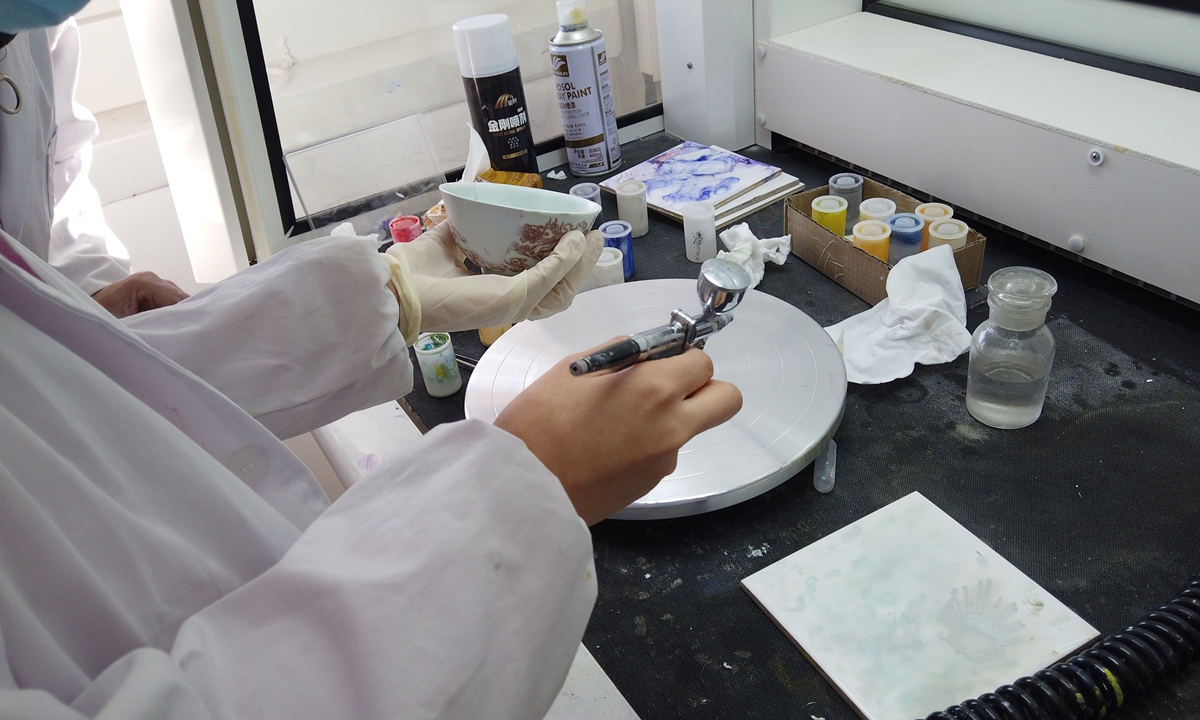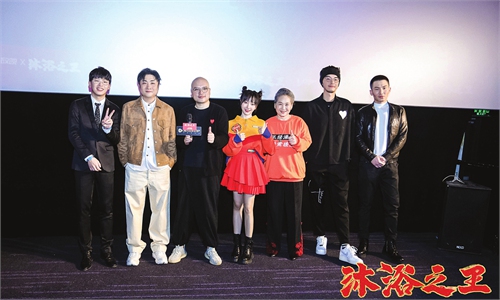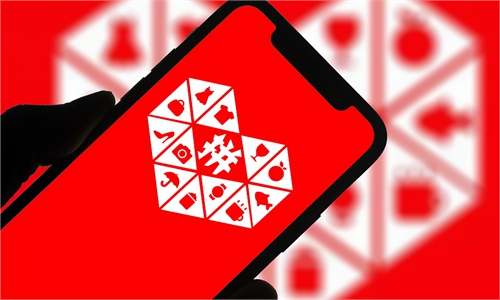ARTS / CULTURE & LEISURE
Experts work to bring back China’s Old Summer Palace
Restoring the past
Video: GT

Experts restore a porcelain bowl at the Old Summer Palace. Photo: Qu Qiuyan/GT
Entering the Old Summer Palace's Cultural Relic Restoration Workstation, several restoration experts wearing white uniforms can be seen sitting together, trying to assemble various ceramic chips into a complete porcelain bowl.
"'Communicating' with cultural relics hundreds of years old is our daily work," Chen Hui, an archaeologist who has worked in the field for more than 20 years and also the director of the Department of Cultural Relics and Archaeology at the Old Summer Palace, told the Global Times.
Piecing history together
The relics that the experts were fixing are part of the third phase of the Old Summer Palace, or Yuanmingyuan, restoration project "Restoration 1860." A total of five colored glazed porcelains unearthed from the Old Summer Palace's Xiyang Lou and 24 pottery relics excavated from other areas at the palace are scheduled to be restored before April.
Xiyang Lou, also known as the Western Mansions, is a group of 18th-century European-style imperial buildings at the Old Summer Palace. Among them, the colored glazed tiles inlaid on the exterior of the buildings was the most dazzling Chinese element used in their construction.
According to historical records, most buildings in the palace were made of wood and were razed during the looting of the Old Summer Palace by Anglo-French Allied Forces in 1860. However, the buildings in Xiyang Lou are made of marble, which is why while many of the buildings there were severely damaged they still managed to survive.
"The reason why we are trying to restore the colored glaze is to show everyone Xiyang Lou's original color," said Chen, adding that Xiyang Lou is a must-visit place for tourists. However, while the exquisitely carved milky white stone pillars have become a symbol, this has given everyone the impression that Xiyang Lou had a very plain color, which was not the case. A lot of resources including some archaeological and historical archives show that Xiyang Lou was actually colorful before its destruction.
As archaeological work has carried on in recent years, more than 100,000 pieces of porcelain as well as stone carvings and colored glazed tiles have been unearthed from the Old Summer Palace. Most of these tiles date back to the Qing Dynasty (1644-1911) and feature more than 20 types of glazes.
Sorting through unearthed ceramic chips one by one has been a tough task for the restoration team, but according to Chen, the most challenging part has been piecing them together.
"The longest one took us about four months," said Chen.
Chen explained that the restoration work usually takes several steps including cleaning, researching related historical resources, drawing sketches according to those resources, selecting glaze colors and writing a summary report on the entire restoration process.
"The primary criterion for restoring cultural relics is the principle of authenticity. If you can't find the information you need for restoration, then you should first preserve it," said Chen, noting that the fixed relics will be shown at an exhibition held in the palace.
All the restored relics will also be 3D scanned to collect a digital record and staff will make use of non-destructive radar detection equipment to conduct foundation surveys and assessments on site.
"The 3D model can provide visitors with a more complete and vivid image, and we are currently coordinating with some institutions to build a digital model of the Old Summer Palace, just like what they did with the Dunhuang Academy in Northwest China's Gansu Province," said Chen.
Cultural confidence
Over the past two decades, Chen has restored many cultural relics, but each has been a fresh experience for her.
"Time flies, but I do like my job," Chen said.
Compared with other jobs connected with today's developing and fast changing society, Chen prefers to spend her time in thousand-year-old archaeological sites and commune with ancient cultural relics. She said this gives her a sense of mission to do her job well.
"Ten years ago, maybe only a few people knew about this occupation, but I could strongly feel that this job is becoming far more popular especially now that many young people are showing a strong interest in this field. I think this is due to our increased cultural confidence," said Chen.
However, being an excellent restorer is not easy as it requires interest, patience and rich experience. Meanwhile, an open and mutual learning attitude is also very important.
"I learned a lot from the theories of Cesare Brandi, an art critic, historian and a specialist in conservation-restoration theory, during my early training. I think holding a welcoming attitude toward international communications is also a good quality for a relics restoration expert," said Chen.
"When we are not able to complete something, we always gain a lot of encouragement from Chinese netizens."
The recent news about the return of the bronze horse head that was looted from the Old Summer Palace has gained a lot of attention on Chinese social media, which has made the experts at the palace very proud.
"I think this is all because of the spirit of the Old Summer Palace, and we need to keep this spirit to continue doing our jobs well!" Chen said.




